Emerald Ash Borer
EAB has had a significant impact on white and green ash trees in Kentucky, causing widespread mortality in these species in counties where EAB has been present for several years.
Though chemical treatments exist that will prevent EAB from successfully infesting ash trees, such treatments can be costly and must be repeated on a yearly or biyearly basis in order to provide continued protection to ash trees. Yet, a very small number of white and green ash trees which have not been treated with insecticides for EAB can be found growing in woodlands and natural areas where EAB has been established for multiple years - these trees are known as lingering ash.
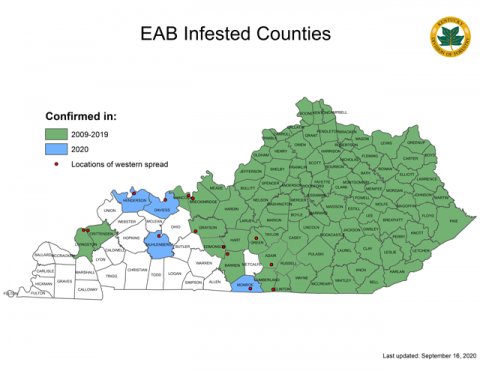
What is EAB?
Signs of EAB Infection
Splitting Bark
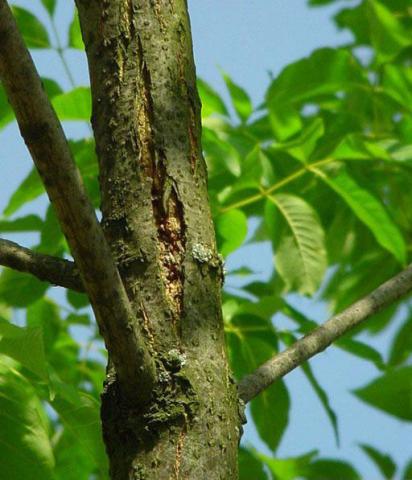
Photo courtesy: Michigan Department of Agriculture, Bugwood.org
Splitting and cracking bark, both on the main trunk and on the branches, can be a sign of EAB.
D-Shaped Holes
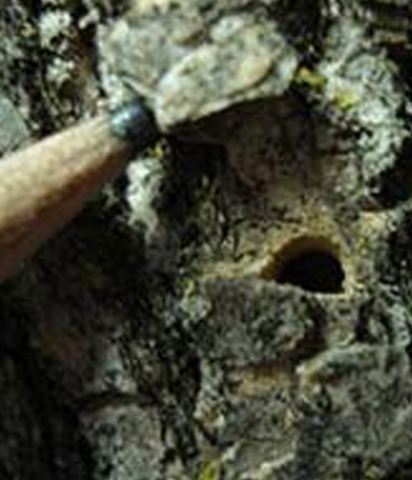
Photo courtesy: Kenneth R. Law, USDA Aphis PPQ, Bugwood.org
When adult beetles emerge from ash trees, they leave D-shaped exit holes behind.
Epicormic Shoots
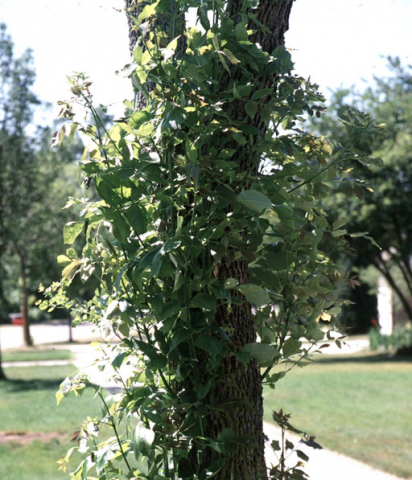
Photo courtesy: Joseph OBrien, USDA Forest Service, Bugwood.org
Stressed and damaged ash trees will often produce many epicormic shoots.
Branch flagging and dieback

Photo courtesy: David Cappaert, Bugwood.org
Branch flagging and dieback are common signs of EAB damage.
EAB larvae galleries
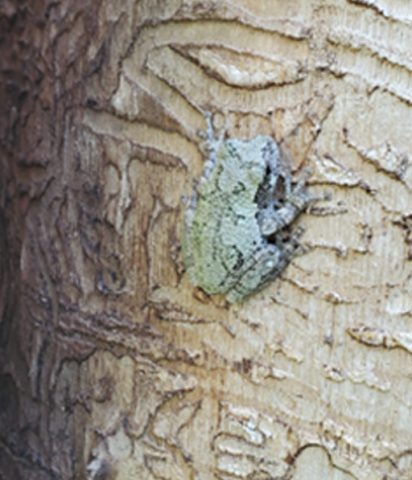
Photo courtesy: Daniel Root
EAB larvae produce serpentine galleries beneath the bark of ash.
Woodpecker damage
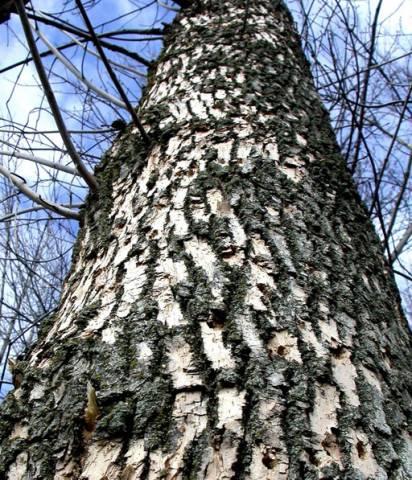
Photo courtesy: David Cappaert, Bugwood.org
Woodpeckers will visit trees with EAB, feeding on beetles in the trees; woodpecker damage and bark flaking can indicate the presence of EAB in ash trees.
